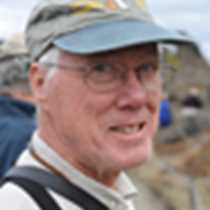Glacier Bay National Park
Most of the land of Southeast Alaska, about seventeen million acres, lies within the Tongass National Forest. It is managed by the U.S. Forest Service in pursuit of its mandate of “multiple use,” a concept that includes facilitating the cutting the forest to market the wood. Other land is owned by Native American corporations that were formed by the Alaska Native Claims Settlement Act of 1971. They, too, are harvesting the forest in order to pay dividends to their shareholders.
And then there is Glacier Bay, established as a National Monument in 1925 and as a National Park in 1980. Here, the land, the forests, and the wildlife are protected in perpetuity for this and future generations to enjoy. And so we did today!
We were fortunate to be joined by two National Park Service Rangers, Emily Mount and Kelly VandenBerg, to tell the stories of Glacier Bay, of the advance and retreat of the glaciers, of the return of the forest following the most recent glacial retreat over the last two hundred or so years, and of the animals that repopulated the land. South Marble Island has been repopulated by seabirds, most of them variations on a theme of black and white, with flashes of color on their bills and feet. The superstars were handsome tufted puffins and black oystercatchers, each with a bright orange bill - large and triangular in the puffins, long and chisel-shaped in the oystercatchers. South Marble Island is also the location of a haul-out of Steller’s sea lions and one thoroughly lost California sea lion.
We continued up-bay, scanning the shoreline for wildlife. Mountain goats were spied high up on Gloomy Knob where they follow the production of new-growth into the alpine region.
The biggest excitement of the day occurred as we passed through Russell Cut: brown bears on the beach. In rapid succession we encountered three. The first was a bit shy and retreated into the shrubs, but bear two and bear three gave us quite a show! We watched a stout and strong bear foraging in the intertidal region, using its enormous strength to overturn boulders that you and I could scarcely budge. Suddenly a much smaller and, frankly, rather scrawny-looking bear emerged from the vegetation. Its spring foraging has apparently not been too successful. Gasps were heard, in fear that the much stronger bear would attack the newcomer, but that was not to be. The bears approached and exchanged a greeting, and soon engaged in an extended bout of play-fighting, boxing and shoving, as seen in the photo.
Surprisingly, in face-to-face combat the smaller bear moved forward and the larger bear backward, although judging from their relative size it should have been otherwise. The guess of this observer is that the two were siblings, perhaps recently departed from their mother and about to face their first winter on their own. This is the most difficult time in the lives of bears and we can only wish them well, that they find the resources to grow fat and healthy in preparation for the winter, and that they survive to join the breeding population of brown bears here in Glacier Bay National Park.




